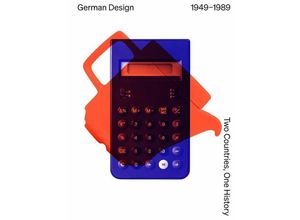Two countries separated by the Iron Curtain but sharing a common history¿this was the
historically unique situation of German design in the era of the country¿s division between
1949 and 1989. This book presents Germany¿s double design history for the first time in a
comprehensive overview. With numerous examples from industrial automotive and furniture
design to fashion graphics and interiors it shows the significant role design played in
daily life on both sides of the Berlin Wall the part it played in reconstruction and its role
as an instrument of political propaganda during the Cold War. Key objects and protagonists¿from
Dieter Rams or Otl Aicher in the West to Margarete Jahny or Karl Clauss Dietel in the East¿are
presented alongside formative factors such as the Bauhaus legacy and important institutions
such as the Ulm School of Design (HfG) and the University of Fine and Applied Arts in
Berlin-Weißensee. GDR design of colourful cheap plastic or the cool functionalism of the FRG:
The book dispels such clichés and reveals¿in addition to all the differences in industry
politics and society¿the many parallels and links that connect design in East and West.



